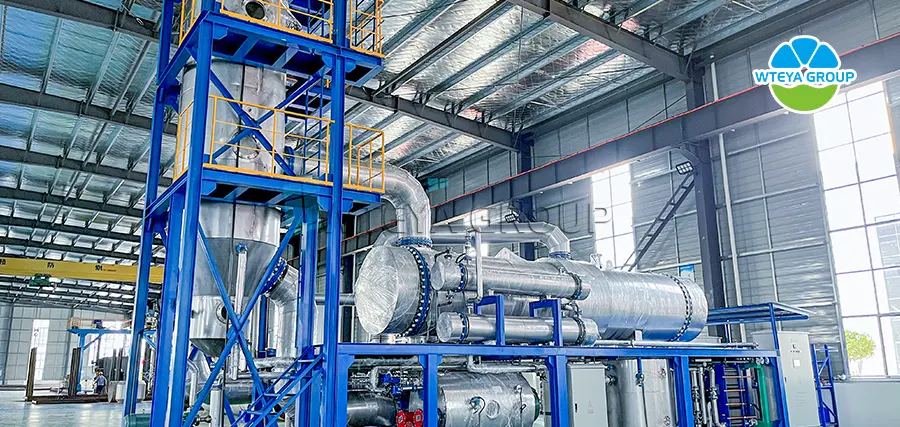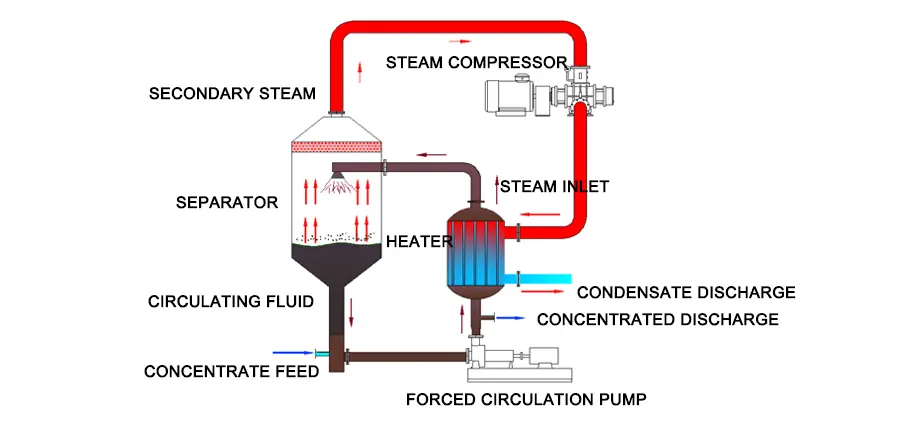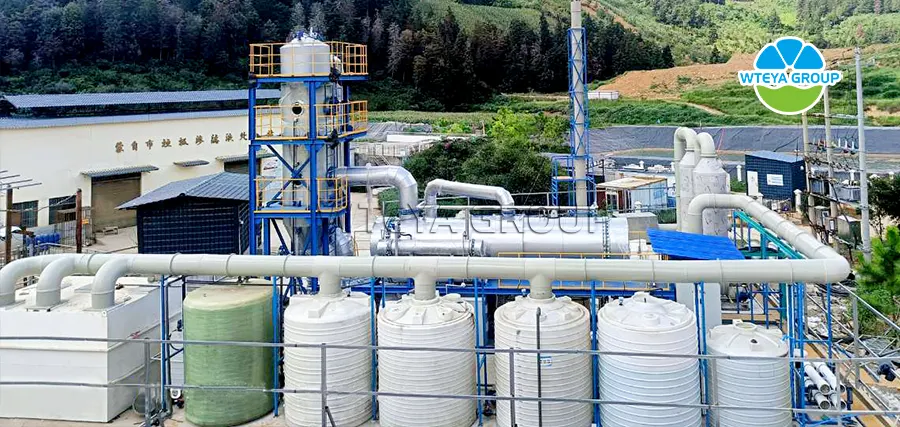MVR evaporation technology! Essential magic weapon for zero wastewater discharge
MVR evaporator is the abbreviation of mechanical vapor recompression technology. It uses the secondary steam generated by the evaporation system itself. It is compressed by the steam compressor to increase the enthalpy value of the secondary steam and reheat the system, thereby reducing the use of external energy. An energy-saving technology in demand. MVR evaporator is a new type of high-efficiency evaporation equipment necessary for zero discharge of industrial wastewater.
1. Principle of MVR evaporation technology
MVR evaporation technology significantly reduces energy consumption and improves the thermal efficiency of the evaporation process. The core of MVR evaporation technology is to use a mechanical compressor (or fan) to recompress the evaporated secondary steam to increase its enthalpy value. The increased secondary steam is then sent into the heating chamber again as a heat source to heat the feed. , its own exothermic phase change becomes condensed water and is discharged, thereby realizing cyclic evaporation.
2. MVR evaporation pretreatment process
Industrial wastewater has diverse and complex compositions. In order to process specific water samples, the MVR system needs to combine a variety of pretreatment processes to ensure stable system operation. Common MVR evaporation pretreatment processes include:
Resin adsorption reduces the hardness of water samples and prevents system scaling.
Quartz filtration and plate and frame filtration process suspended solids SS to prevent the system from sticking to walls and blocking pipes.
Reverse osmosis and electrodialysis treat low-concentration brine to provide salt concentration and reduce operating costs.
Advanced oxidation pretreatment such as wet oxidation can reduce water sample COD and prevent system sticking and salt crystallization difficulties.
Wteya's MVR evaporator 100% recycles the latent heat of secondary steam, greatly reducing energy consumption and low operating costs. It has a compact structure and a small footprint; it is especially suitable for small space construction; it has a fully automated control operating system. It has been successfully used in zero-discharge industrial wastewater fields such as hazardous waste industry, lithium battery industry, petrochemical industry, biological fermentation industry, and pharmaceutical industry.
3. MVR evaporation process
The main evaporation processes of MVR evaporation include: forced circulation evaporation, falling film evaporator, rising film evaporator, combined evaporation and other forms. Select an appropriate evaporation process according to material characteristics and evaporation requirements.
3.1 MVR forced circulation evaporation process
The circulation of materials in the equipment mainly relies on large-flow forced circulation pumps. The circulation speed can generally reach 1.5-3.0 meters/second, and the processing capacity is large.
The material is heated and pressurized in the heat exchange tube, and flashed in the separator. The secondary steam from the flash evaporation of the material enters the compressor to heat up and pressurize. Only a small amount of external steam is needed to supplement the steam, which saves energy consumption compared with single-effect evaporation. The secondary vapor enters the compressor through gas-liquid separation, and the concentrated liquid falls to continue circulation.
Anti-salting out, anti-scaling, strong adaptability, easy to clean.
Energy consumption: 35-60 kwh/ton of water
3.2 MVR combined evaporation process
The MVR combined evaporation process mainly includes: rising film + forced circulation evaporation process, falling film + forced circulation evaporation process.
It is necessary to select an appropriate process design based on the material conditions and processing requirements, taking into account investment, energy consumption, device operation stability, etc.
A compressor is used to provide the heat source. Compared with traditional evaporators, the temperature difference is much smaller and can achieve gentle evaporation, greatly improving product quality and reducing scaling.
All materials suitable for single-effect and multi-effect evaporators are suitable for MVR evaporators.
4. Features of MVR evaporator
High efficiency and energy saving: high thermal efficiency, energy saving, low specific energy consumption. The energy consumption of evaporating 1T of water is about 1/5-1/3 of a traditional evaporator.
Low operating cost: Due to low energy consumption, the operating cost of the entire evaporator is only one-third to one-half of that of a traditional evaporator.
Small footprint: Highly compact mechanical structure, the footprint is more than 50% smaller than traditional evaporators.
Durable: The system is not prone to scaling. The equipment is equipped with CIP cleaning pipelines, which can be cleaned on site. The entire equipment is easy to operate and has no dead ends.
Fully automatic operation: The structure and process are very simple, with a high degree of automation, simple operation, continuous operation, safe and reliable.










